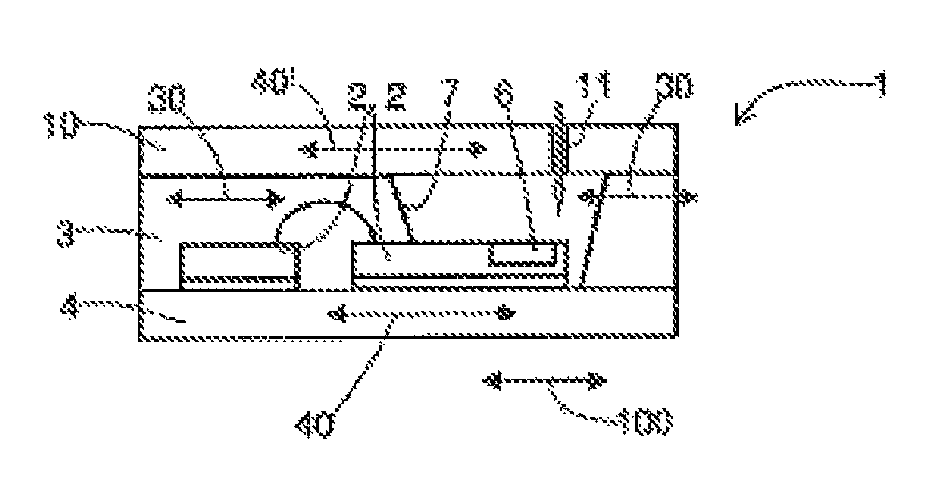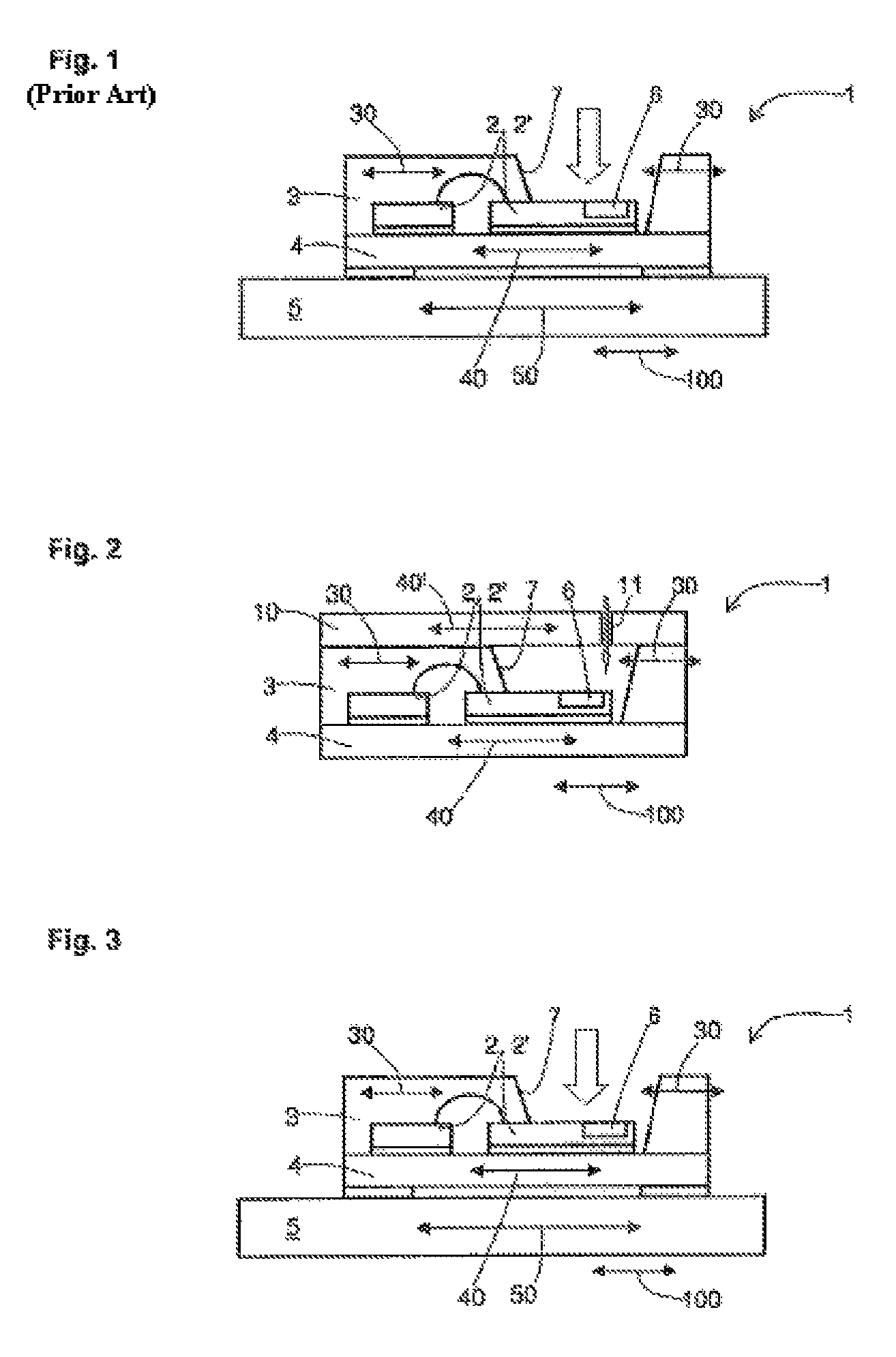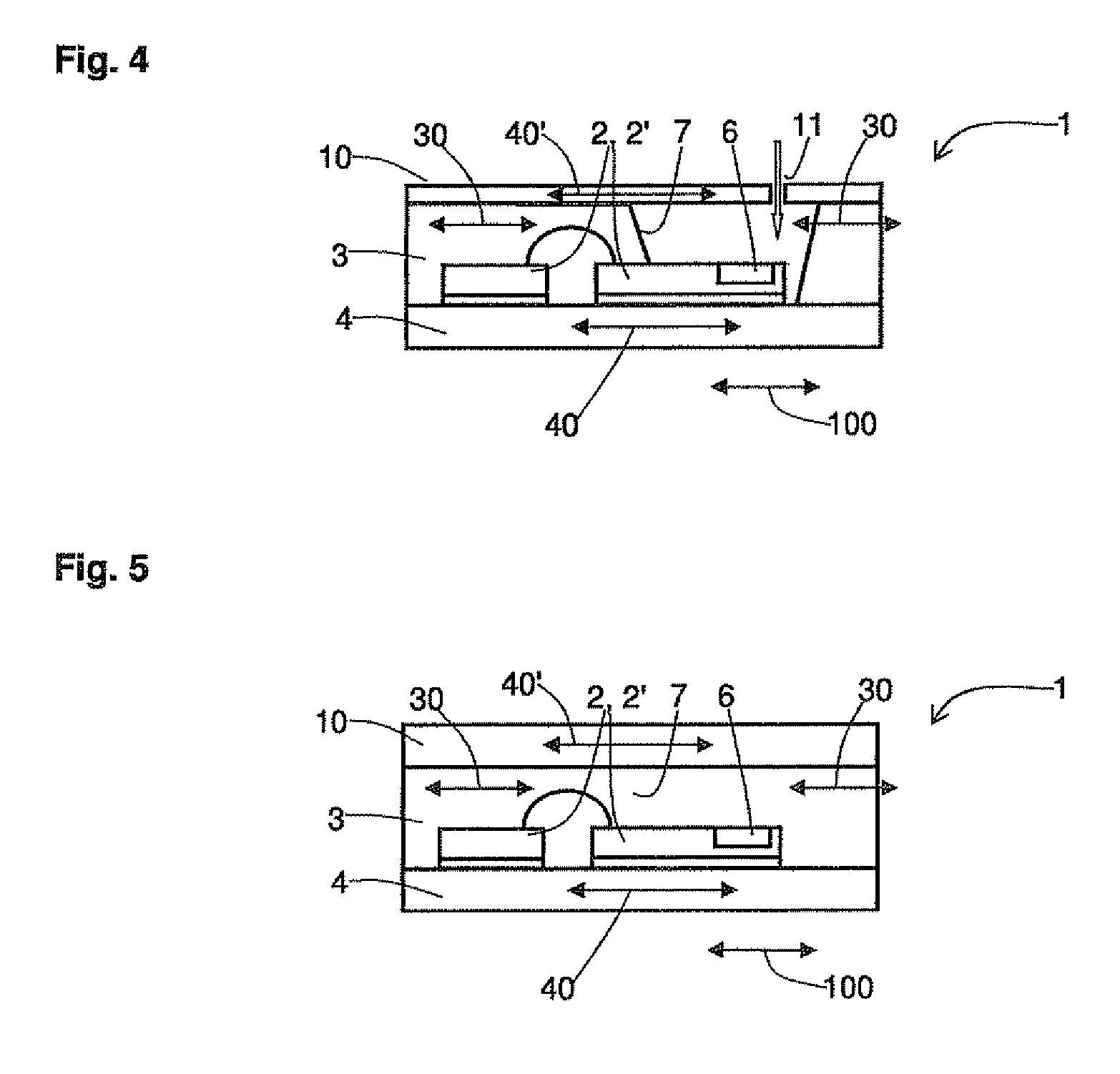Sensor module and method for producing a sensor module
a sensor module and sensor technology, applied in the direction of fluid pressure measurement, instruments, semiconductor/solid-state device details, etc., can solve the problems of completely exposed regions of sensor elements and unprotected exposure to potential environmental conditions, and achieve simple and cost-effective implementation, less sensitive, and effective prevention of thermal deformation of sensor modules using compensation elements
- Summary
- Abstract
- Description
- Claims
- Application Information
AI Technical Summary
Benefits of technology
Problems solved by technology
Method used
Image
Examples
Embodiment Construction
[0028]In the figures, identical elements are provided with the same reference numerals and thus are usually also named or mentioned only once.
[0029]FIG. 1 shows a schematic lateral view of a sensor module 1 according to the related art, sensor module 1 including a sensor element 2, 2′, a housing 3 and a substrate 4. Sensor element 2, 2′ is situated on substrate 4 and includes a pressure sensor having a pressure-sensitive region 6. Housing 3 has an opening 7 in the area of pressure-sensitive region 6, so that a measuring medium 8 is able to reach pressure-sensitive region 6 through opening 7. Sensor module 2, 2′, inside housing 3, for example, has an electric contact in the form of a bonding wire 2″. Substrate 4 in particular includes a leadframe, which is produced, for example, by stamping from sheet metal. Sensor element 2, 2′ may be fastened mechanically to substrate 4, and is electrically contacted via patternings of substrate 4. Substrate 4 is situated on a printed-circuit board...
PUM
| Property | Measurement | Unit |
|---|---|---|
| thermal deformations | aaaaa | aaaaa |
| temperature | aaaaa | aaaaa |
| thermomechanical material properties | aaaaa | aaaaa |
Abstract
Description
Claims
Application Information
 Login to View More
Login to View More - R&D
- Intellectual Property
- Life Sciences
- Materials
- Tech Scout
- Unparalleled Data Quality
- Higher Quality Content
- 60% Fewer Hallucinations
Browse by: Latest US Patents, China's latest patents, Technical Efficacy Thesaurus, Application Domain, Technology Topic, Popular Technical Reports.
© 2025 PatSnap. All rights reserved.Legal|Privacy policy|Modern Slavery Act Transparency Statement|Sitemap|About US| Contact US: help@patsnap.com



